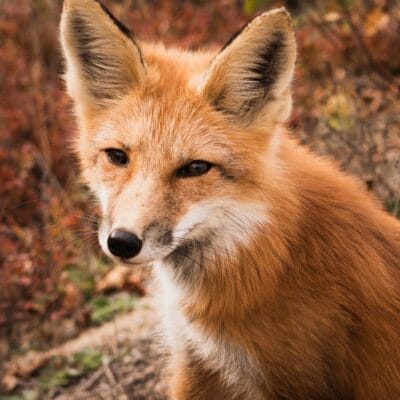To truly appreciate the beauty of birds, you must first delve into their behavior. Birds are fascinating creatures, each species exhibiting unique habits and social structures. Observing them can reveal a lot about their needs and preferences.
For instance, many birds are diurnal, meaning they are most active during the day. This activity is often tied to their feeding patterns, as they seek out food during daylight hours when visibility is optimal. By understanding these patterns, you can better anticipate when to set up your birdwatching activities or when to provide food.
Moreover, social interactions among birds can be quite complex. Some species are solitary, while others thrive in flocks. You might notice that certain birds engage in elaborate courtship displays or vocalizations to attract mates or establish territory.
These behaviors are not just fascinating to watch; they also provide insight into the health of the local ecosystem. When you observe birds interacting, you can gauge their population dynamics and even the overall health of your environment. By taking the time to learn about these behaviors, you can enhance your birdwatching experience and create a more inviting space for them.
Key Takeaways
- Birds communicate through body language, vocalizations, and behavior patterns.
- Providing natural food sources, water, and shelter will attract a variety of bird species to your yard.
- Choose feeders that are easy to clean, have adequate drainage, and are squirrel-proof.
- Offer a variety of bird foods such as seeds, suet, and nectar to attract different bird species.
- Keep bird baths clean and provide fresh water daily to attract and support a diverse bird population.
Creating a Bird-Friendly Environment
Assess and Enhance Your Outdoor Space
Creating a bird-friendly environment is essential for attracting a diverse range of species to your backyard. Start by assessing your outdoor space and identifying areas that can be enhanced to meet the needs of birds. Consider adding natural elements such as trees, shrubs, and flowers that provide shelter and nesting sites.
Designing a Safe Haven for Birds
Birds are more likely to visit areas where they feel safe and secure, so incorporating dense foliage can make your yard a haven for them. In addition to natural vegetation, think about the layout of your garden. Birds prefer environments that offer a variety of habitats, including open spaces for foraging and sheltered areas for resting.
Creating a Diverse and Vibrant Ecosystem
You might want to create layers in your garden by planting taller trees alongside shorter shrubs and ground cover plants. This diversity not only attracts different bird species but also supports other wildlife, creating a vibrant ecosystem right in your backyard. By making these thoughtful changes, you can transform your outdoor space into a sanctuary for birds.
Choosing the Right Bird Feeders

Selecting the right bird feeders is crucial for attracting various species to your yard. Different birds have different feeding preferences, so it’s important to choose feeders that cater to these needs. Tube feeders are excellent for small songbirds like finches and chickadees, while platform feeders can accommodate larger birds such as doves and jays.
You may want to invest in multiple types of feeders to attract a wider range of species. Placement of the feeders is equally important. Position them near natural cover, such as trees or shrubs, where birds can easily access food while feeling safe from predators.
Additionally, consider placing feeders at different heights to cater to various species. Some birds prefer feeding at ground level, while others feel more comfortable at higher elevations. By thoughtfully selecting and positioning your feeders, you can create an inviting atmosphere that encourages birds to visit regularly.
Selecting the Best Bird Food
Choosing the right bird food is essential for attracting and nourishing the feathered visitors in your yard. Different species have specific dietary needs, so it’s important to offer a variety of food options. For instance, sunflower seeds are a favorite among many birds, including cardinals and goldfinches.
Nyjer seeds are particularly appealing to finches, while suet cakes provide high-energy nutrition for woodpeckers and nuthatches. In addition to seeds and suet, consider offering fruits and nuts as well. Many birds enjoy berries, apples, and even oranges, which can be placed on platform feeders or hung from trees.
You might also want to include mealworms or other protein sources during breeding season when birds require extra energy for raising their young. By providing a diverse selection of food options, you can attract a wider variety of birds and support their nutritional needs throughout the year.
Providing Fresh Water Sources
Water is a vital resource for birds, and providing fresh water sources in your yard can significantly enhance its appeal. Birds need water not only for drinking but also for bathing, which helps them maintain their feathers in good condition. A simple birdbath can serve as an excellent water source; however, it’s important to keep it clean and filled with fresh water regularly.
Consider adding features like a shallow dish or a fountain that creates movement in the water, as moving water tends to attract more birds than stagnant water. If you have space, you might even create a small pond or wetland area that offers various depths for different species. By ensuring that fresh water is readily available, you’ll create an inviting environment that encourages birds to visit frequently.
Planting Bird-Friendly Vegetation

Food Sources for Birds
Planting bird-friendly vegetation is one of the most effective ways to attract birds to your yard while also enhancing its beauty. Native plants are particularly beneficial because they provide food and shelter that local bird species have evolved to rely on. Consider incorporating a mix of trees, shrubs, and flowering plants that produce seeds, berries, or nectar throughout the seasons.
Providing Essential Cover
In addition to providing food sources, native plants offer essential cover for nesting and protection from predators. You might want to research which plants are native to your region and select those that will thrive in your specific environment.
Contributing to Local Biodiversity
By creating a diverse landscape filled with native flora, you’ll not only attract birds but also contribute positively to local biodiversity.
Keeping Predators at Bay
While attracting birds to your yard is rewarding, it’s equally important to consider their safety from predators. Cats are one of the most common threats to backyard birds; therefore, if you have pets, it’s crucial to keep them indoors or supervised when outside. Additionally, you can create safe zones within your garden by providing dense shrubs or trees where birds can hide from potential threats.
You might also want to avoid placing feeders too close to areas where predators can easily ambush birds, such as open spaces or near fences where cats may lurk. By being mindful of these factors and creating safe havens within your yard, you can help ensure that your feathered friends feel secure while enjoying their time in your garden.
Maintaining a Safe and Clean Environment
Maintaining a safe and clean environment is essential for the health of the birds visiting your yard. Regularly cleaning feeders and birdbaths helps prevent the spread of diseases that can affect avian populations. Use mild soap and water to clean these items thoroughly, ensuring they are rinsed well before refilling them with food or water.
Additionally, be vigilant about removing any uneaten food from feeders or the ground beneath them, as leftover food can attract pests or lead to mold growth. Keeping your garden tidy not only benefits the birds but also enhances the overall aesthetic of your outdoor space. By committing to regular maintenance and cleanliness, you’ll create a welcoming environment that supports the health and well-being of your avian visitors.
In conclusion, creating an inviting space for birds requires understanding their behavior and needs while taking proactive steps to enhance your environment. By implementing these strategies—such as providing diverse food options, fresh water sources, safe habitats, and maintaining cleanliness—you can foster a thriving bird community right in your backyard. Enjoy the beauty and joy that comes with attracting these remarkable creatures into your life!
If you’re looking to enhance your mindfulness practice while enjoying the beauty of nature in your garden, you may want to check out The Power of Mindfulness: Daily Practice Techniques. This article explores the benefits of incorporating mindfulness into your daily routine and offers practical tips for cultivating a more mindful mindset. By combining the peaceful presence of birds in your garden with mindfulness techniques, you can create a serene and rejuvenating outdoor space for relaxation and reflection.
FAQs
What are some ways to attract birds to your garden?
Some ways to attract birds to your garden include providing food such as bird feeders and native plants that produce seeds and berries, offering fresh water for drinking and bathing, and creating shelter with trees, shrubs, and birdhouses.
What types of plants are attractive to birds?
Plants that produce seeds, berries, and nectar are attractive to birds. Native plants such as sunflowers, coneflowers, and serviceberry are popular choices for attracting birds to the garden.
What kind of bird feeders should I use?
There are different types of bird feeders such as tube feeders, platform feeders, and suet feeders. It’s best to use a variety of feeders to attract different types of birds. Make sure to keep the feeders clean and filled with fresh food.
How can I provide water for birds in my garden?
You can provide water for birds by setting up a birdbath or a shallow dish with clean, fresh water. It’s important to keep the water clean and change it regularly to prevent the spread of disease.
What are some common mistakes to avoid when trying to attract birds to the garden?
Common mistakes to avoid include using pesticides that can harm birds, placing bird feeders and birdbaths too close to windows where birds can collide, and not providing enough variety of food, water, and shelter for different bird species.












No Comment! Be the first one.